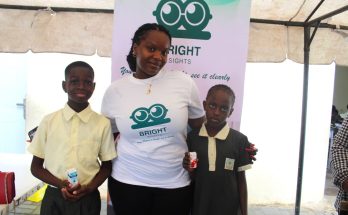Worried by the increasing number of child workers across Nigeria public policy think-tank, Nextier, has tasked government at all levels to tackle endemic child labour through legislative reforms, creation of jobs and enforcement of laws protecting children’s vulnerabilities.
According to International Labour Organisation (ILO) there are 15 million child workers across Nigeria.
The ILO defines “child labour” as work that deprives children of their childhood, potential and dignity, especially work that is mentally, physically, socially or morally dangerous, harmful to children, and/or interferes with their schooling.
Proffering solutions in a report, released at the weekend, Nextier, charged global and domestic nongovernmental organisation as well as communities to pitch in their support with collaborative efforts to tackle child labour.
The report, titled: ‘Building a Child-Friendly Nation: Policy Initiatives and Challenges,’ authored by Nextier Policy and Research Consultant, Ndidi Anyanwu, further stressed the need for adequate funding, monitoring and evaluation, peace and security for initiatives to sustain children’s quality education, access and enrolment.
Underscoring the seriousness of the global problem of child labour, the report noted that as of 2021, 160 million children, comprising 63 million girls and 97 million boys, were involved in child labour which compromised their childhood, education, and overall development.
“The regions mostly affected by child labour are Africa, Asia, and the Pacific, accounting for nine out of every ten children in child labour worldwide”, it stated.
In Nigeria, child labour represents a deeply entrenched challenge that warrants attention and effective policy interventions, especially as the distressing figure paints a grim picture of exploitation and the lost potential of these children’s futures, the research highlighted.
It was also noted that with an estimated 180 million people and at least seven million babies born each year, 46 per cent of the Nigeria’s population is under the age of 15.
“Addressing child labour is a long-term and multifaceted challenge that requires sustained efforts across multiple fronts.
“Effective solutions involve a combination of poverty reduction, access to quality education, awareness campaigns, enforcement of laws, collaboration between government and non-governmental organisations, and creating supportive economic environments for families.
“Progress will likely be gradual and require a comprehensive approach that tackles the underlying drivers of child labour”, Anyanwu pointed out in the report.
It was particularly noted that children in Nigeria are subjected to the worst forms of child labour, which include commercial sexual exploitation and involvement in armed conflicts, and other hazardous activities like quarrying granite and artisanal mining.
According to the United States Bureau of International Labor Affairs, Nigeria continues to be a source, transit, and destination country for forced labour and sex trafficking of both adults and children.
“While women and girls are recruited for domestic service and sex trafficking, boys are recruited for street vending, domestic service, mining, agriculture, and begging. Nigerian girls are also sent to North Africa and Europe for forced labour and commercial sexual exploitation”, Anyanwu also submitted in the report.
She concluded that, “addressing the root causes of child labour requires a comprehensive approach involving legislative reforms and government-targeted efforts to create employment opportunities for adults and raise awareness about children’s rights and the risks of child labour. It is also important that all states are supported in adopting and enforcing the Child’s Right Act.
“Adequate provisions should be made for the enforcement of child labour laws. The government must ensure labour inspectors receive sufficient resources to enforce child labour laws. This could include providing inspectors with the necessary financial, technical, and human resources to perform their functions effectively.
“Collaboration among government agencies, relevant NGOs, international organisations, and local communities is imperative in tackling child labour.
“Policy changes, awareness campaigns, and social support programs are essential components of a holistic strategy to combat child labour.
“Policy makers must work closely with faith leaders, parents, and community groups to design, monitor and implement strategies that consider the local context, provide viable alternatives to child labour practices, and keep vulnerable children out of hazardous work.”



